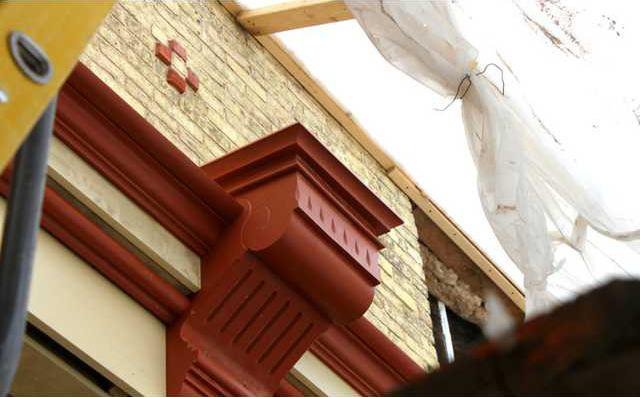DARLINGTON – It won’t be long now until the Driver Opera House will have their opening debut.
On March 10 at 1 p.m., members of the Driver Opera House board of directors will unveil what has been going on behind that giant tarp.
In true theatrical form, once the scaffolding is taken down, a big black tarp will be put into place until the day of the reveal to show its amazing transformation.
Construction on the opera house began in May 2017 with the hopes of being completed in December but due to some unforeseen issues, like the flooding in July, the project was pushed back a couple of months.
Stan Krahenbuhl, board president stated that when the basement was being dug out, they ran into a few snags.
“We had to replace a beam upstairs and extend the elevator shaft to hold the beam. If we had waited to do it later, we would have had to cut the floor. It was more economical this way,” he said.
Several things had to be done to the upstairs portion of the building that the board had not planned on doing in the beginning. But Krahenbuhl is looking on the bright side, saying that now it is just less for them to do when the second phase does begin.
As of now, the board is looking for renters for the main floor. The entire first floor is open to be rented. They still need to come up with a set square foot price but plan on keeping it as affordable as possible and the sooner they can get a renter, the more input that renter can have for some design to their space.
“The main goal is once the retail portion is done, then they have to disturb them while working on the second phase,” Krahenbuhl said.
The building will transport visitors back to the heyday of the opera with all the accommodations of this era. All of the colors chosen for the outside of the building were determined by taking some of the material and sanding it and brushing it down to the original coat of paint. Concrete was stamped to make the appearance of limestone for the foundation. Plenty of natural light will be flowing throughout the main floor with large windows in the main entrance and along on Ann Street.
“That was part of the grant to get the building to look like it originally did. This is as close as the building would have looked like,” he added.
Krahenbuhl stated that there is still quite a bit to do for the second phase but not as much as the first. After replacing windows, brick and the theatre, much of the second phase could be done locally.
“It won’t need the technical skills like the first phase with the flood proofing. People can volunteer to do work. Drywall and painting can come locally also,” Stan mentioned.
With it all said and done, they are looking to have about $1.4 million into all of it, which is pretty incredible for a small town, Stan said.
“This should be a wow factor.”
Curtain call for the Driver Opera House




